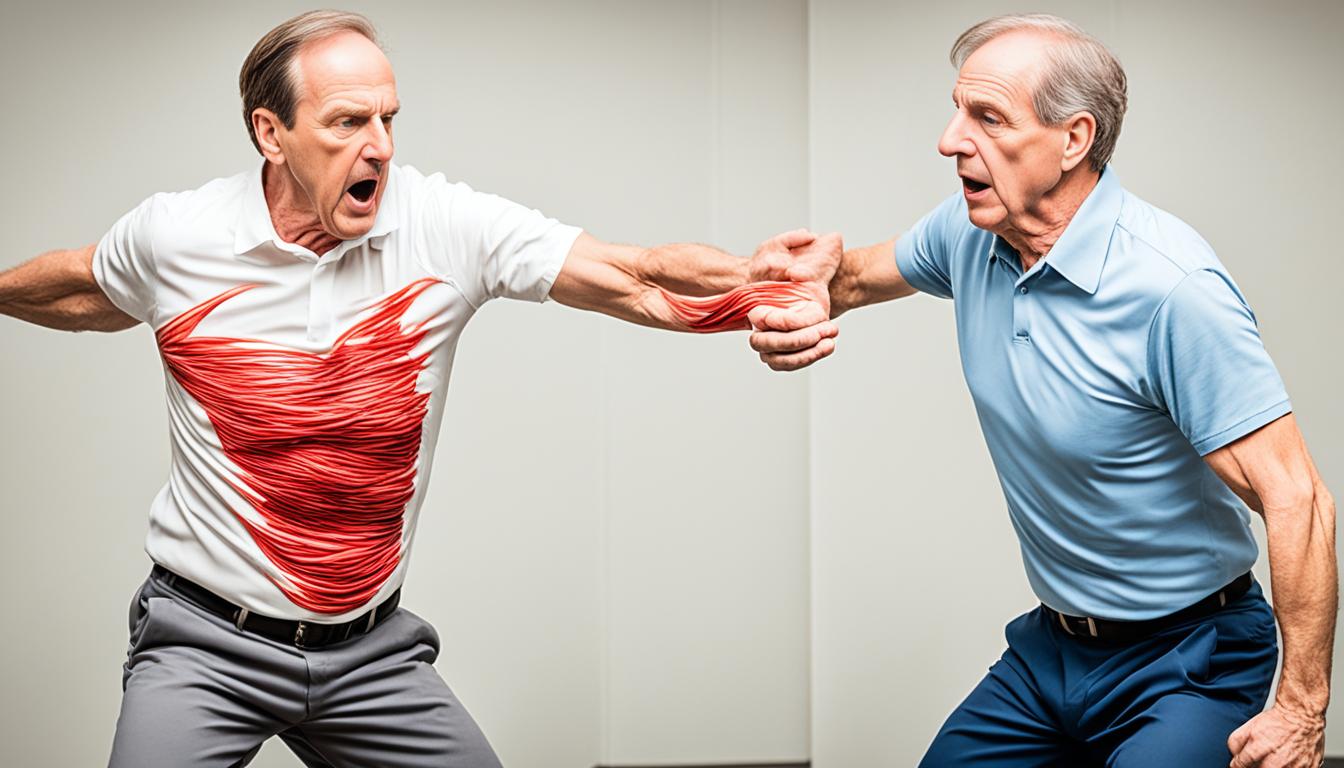Movement disorders are a group of conditions that affect how we move. They can show up as tremors, stiffness, slow movement, or movements we can’t control. Some well-known movement disorders are Parkinson’s disease, dystonia, essential tremor, ataxia, and restless leg syndrome.
The reasons behind movement disorders can change from person to person. Often, genetics and things in the environment play a role. To figure out what’s happening, doctors look at your medical history, do a physical exam, and might run some tests.
At the moment, doctors often treat these disorders with drugs or surgery. But now, stem cell therapy is showing promise. It might help people get better and enjoy life more, even with these conditions.
Key Takeaways:
- Movement disorders are a group of neurological conditions that affect movement control.
- Common movement disorders include Parkinson’s disease, dystonia, essential tremor, ataxia, and restless leg syndrome.
- Diagnosis of movement disorders involves a comprehensive evaluation by a neurologist or movement disorder specialist.
- Traditional treatment options for movement disorders include medications and surgical procedures like deep brain stimulation.
- Stem cell therapy is an emerging frontier in the treatment of movement disorders, offering the potential for restoration of function and improved quality of life.
Types of Movement Disorders
There are many types of movement disorders. Each one has its own signs and treatments. Knowing about these disorders helps doctors make the right diagnosis and treatment plan.
Parkinson’s Disease
Parkinson’s disease affects millions worldwide. It shows up with shaking, stiffness, slow movements, and trouble balancing. These problems can get worse over time, making daily life hard for those with the disease.
Essential Tremor
Essential tremor makes people shake without meaning to. It’s most obvious in the hands but can also affect the head, voice, or legs. These shakes can get worse with stress, making simple tasks tough.
Dystonia
Dystonia causes muscles to move involuntarily. This might lead to twisting movements or strange body positions. It can hurt and make it hard to move.
Ataxia
Ataxia affects the way we move. It makes walking, balancing, talking, and eye movements hard. It can be caused by different things, like genes, head injuries, or certain drugs.
Huntington’s Disease
Huntington’s is a rare disease that runs in families. It damages the brain and leads to random movements and other serious issues. Eventually, those with the disease need help with daily living.
Table: Comparison of Common Movement Disorders
| Disorder | Symptoms | Treatment Options |
|---|---|---|
| Parkinson’s Disease | Tremors, rigidity, slowness of movement, balance problems | Medications, deep brain stimulation, focused ultrasound, gene therapy, stem cell therapy |
| Essential Tremor | Involuntary shakes or tremors, typically in the hands | Medications, deep brain stimulation, focused ultrasound, Botox injections, physical therapy |
| Dystonia | Involuntary muscle contractions, repetitive or twisting movements | Medications, botulinum toxin injections, deep brain stimulation, physical therapy |
| Ataxia | Problems with coordination, gait abnormalities, speech changes, abnormal eye movements | Physical therapy, assistive devices, evaluation and management of underlying causes |
| Huntington’s Disease | Uncontrolled movements, emotional problems, cognitive decline | Medications, symptom management, support services |
Treatments for these disorders depend on the specific one and its symptoms. A team of experts, including neurologists and physical therapists, often work together to help patients.
The Promise of Stem Cell Therapy
Stem cell therapy is a new hope for movement disorders. It uses stem cells, mainly neural stem cells, to grow new nerve cells. These new cells can help people with conditions like Parkinson’s disease move better.
The Regeneration Center leads in using stem cell therapy for movement disorders. Trials show it can help patients move and feel better. This is a big step in medical research.
Even though it’s early, stem cell therapy gives hope to many. It aims to bring back movement and improve life. Future studies and improvements might make it a common treatment someday.

